What makes a game or sport more fun than its original form is its variants. Variants of a game or sport retain some standard rules of the original game while modifying other rules. Sometimes, new rules come in to make the variants fun and unique.
Chess is blessed with many variants, thanks to the centuries of creative minds that have graced the game.
In this post, we look at a few—out of a ton of—variants that you would likely enjoy.
Chess960
Chess960 is also called Chess9LX or Fischer Random Chess among elite chess standards.
Fischer Random Chess is arguably the most popular chess variant in the world today.
As the name implies, American legend and arguably the greatest chess player of all time, Bobby Fischer, proposed this variant to the world in 1996.

However, Chess960 shares many similarities with standard chess. They are both played on the 8×8 board dimension. They have the same en passant move, castling move, 50-move rules, and the likes.
One difference between Chess960 and standard chess is the opening arrangement of pieces. Instead of the usual opening arrangement with the rooks at the edges, the royal pieces in the middle files, and the bishops beside them, the pieces are randomly arranged in the opening which can lead to 960 unique arrangements, leading to the “960” in its name.

So, if you’re the type of player that obsesses over opening theory, then you might fall short in Chess960. Furthermore, this variant is so popular that it has a World Championship tournament called the FIDE World Fischer Random Chess Championship.
The current champion is American Grandmaster, Hikaru Nakamura. The most similar variant to the Chess960 is the Transcendental Chess, where both sides have different opening piece arrangements.
Also, sites like chess.com and Lichess.org host Chess960 games if you’d like to try out this variant. You could even set it up OTB, provided you follow the rules of arrangements.
Crazyhouse Chess
Recall science fiction movies and how people become zombies and then attack the people they love?
The same thing applies to the concept of Crazyhouse chess. Any piece that gets captured joins the ranks of the opponent. It practically becomes a zombie that can return to the board as a soldier of the opponent’s empire—fighting against his former allies.
It’s fun to think about how cool this concept is. Asides from chess960, Crazyhouse is one of the most popular chess variants today.
Like every other variant, some rules govern this exciting variant. For instance, players cannot drop pawns on the back ranks. Promoted pawns retain their pawn status, not the officer they became after promotion when a player captures them.
The Crazyhouse chess variant is so unique that it has a chess notation symbol exclusive to it—the @.
@ is used when a player drops a piece on the board from off the board.
Sometimes, people mistake Crazyhouse for Bughouse, but the difference is that Bughouse is a game for four players, while Crazyhouse is for the conventional two players. If you’re not afraid to let your mind run wild, then this variant is perfectly designed for you.
Horde Chess
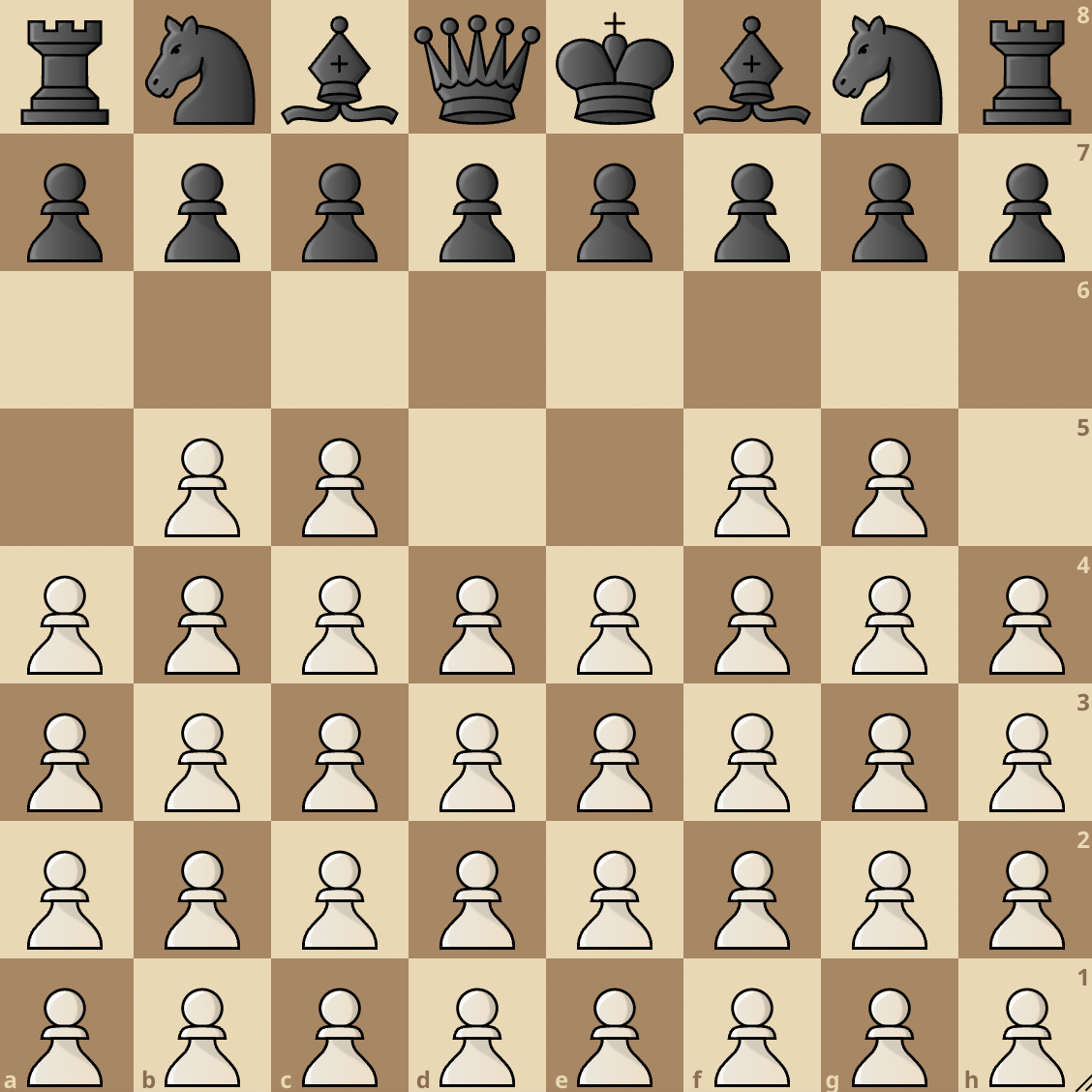
“Pawns are the soul of chess“—one of the most popular chess quotes by Francois-Andre Philidor.
The word “Horde” hints at a large group, especially one that is not organized. In this variant, Black has the usual number and arrangement of pieces, but it’s not the same for white.
White gets to use just pawns—A LOT of pawns, precisely 36 of them. This concept of having to use so many pawns gives the variant its name.
The rules are simple. Since white has no king to mate, Black can win if he captures all pawns—or promoted pawns.
If you’re a big fan of pawns, Horde Chess is sure to interest you. You can set up Horde Chess Over The Board(physical). Although, you might need the pawns of about three extra chess sets.
Make sure you place the last four pawns on the fifth rank on b-, c-, f-, and g- files as shown in the image above. You can play this variant on chess platforms like chess.com and Lichess.org.
Four-player Chess
As the name implies, four players can enjoy this variant. It can also be called Quatrochess.
It is played on an 8×8 dimension chess board but has an extension of 3 files per side of the square-shaped board. This design gives the board the look of an opened carton box from a central eagle-eye view.
The four-player chess variant tests your patience, as you’d have to wait for another two turns before making a move, in contrast to the usual system in standard chess.
The rules of the game allow players to team up against the other team of two. As the case may be, one player may decide to face an alliance of the other three players. Super Grandmasters are free to give it a shot!
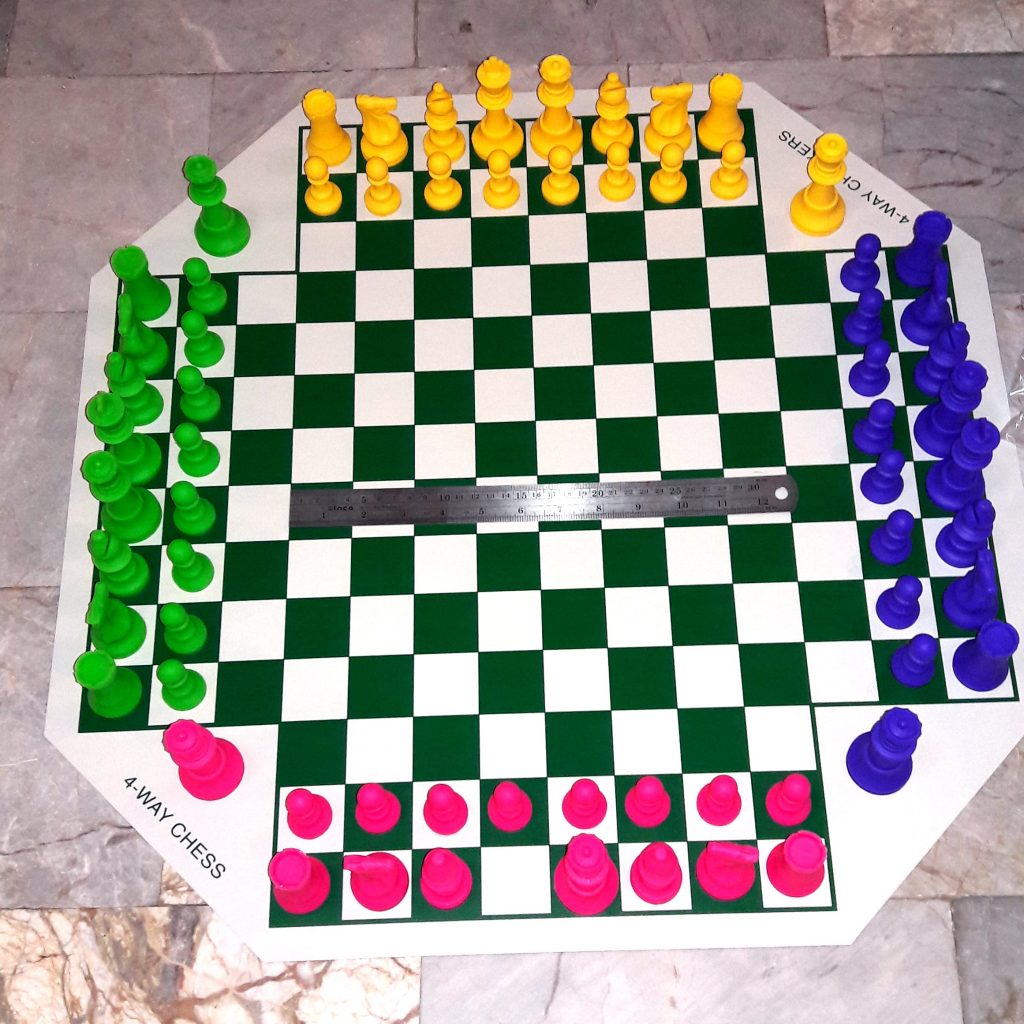
Also, teamed players are allowed to communicate and share strategies to best the opposing team.
On chess.com, where one can play this variant, they provide a feature where allied players can make a private in-game voice call to their teammates to discuss strategies. This chess variant has some bizarre rules like the freedom to capture the King, designed by chess.com.
Three-player Chess
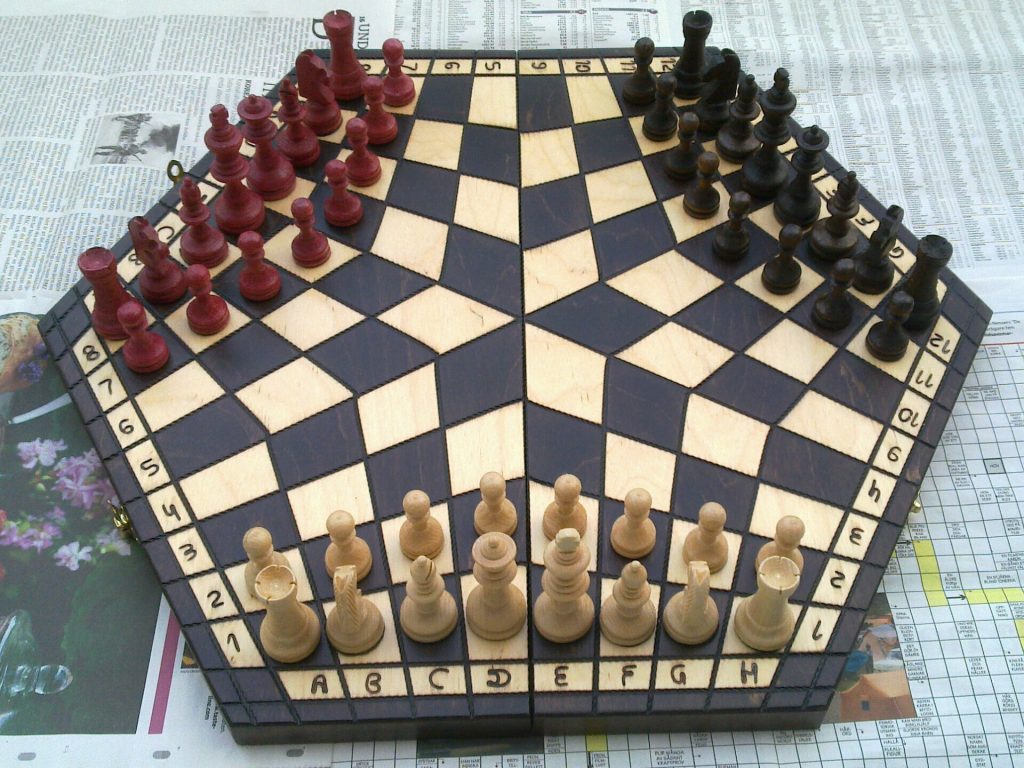
Unlike many others, you can play three-player chess on a hexagonal board. Due to the hexagonal shape of the board, some squares on the board are not equilateral—some are not squares at all.
This variant was founded in 1984 by an American chess player, George Dekle. Some rules govern this type of chess game.
One of the rules states that the Bishop must change the color of its square once it crosses the center of the board.
Three-player chess is not to be confused with other chess variants by George Dekle, such as Tri-chess and Triangular chess, which are chess variants also played on hexagonal boards.
You can read our guide detailing steps on how to play Three player Chess.
Dice Chess
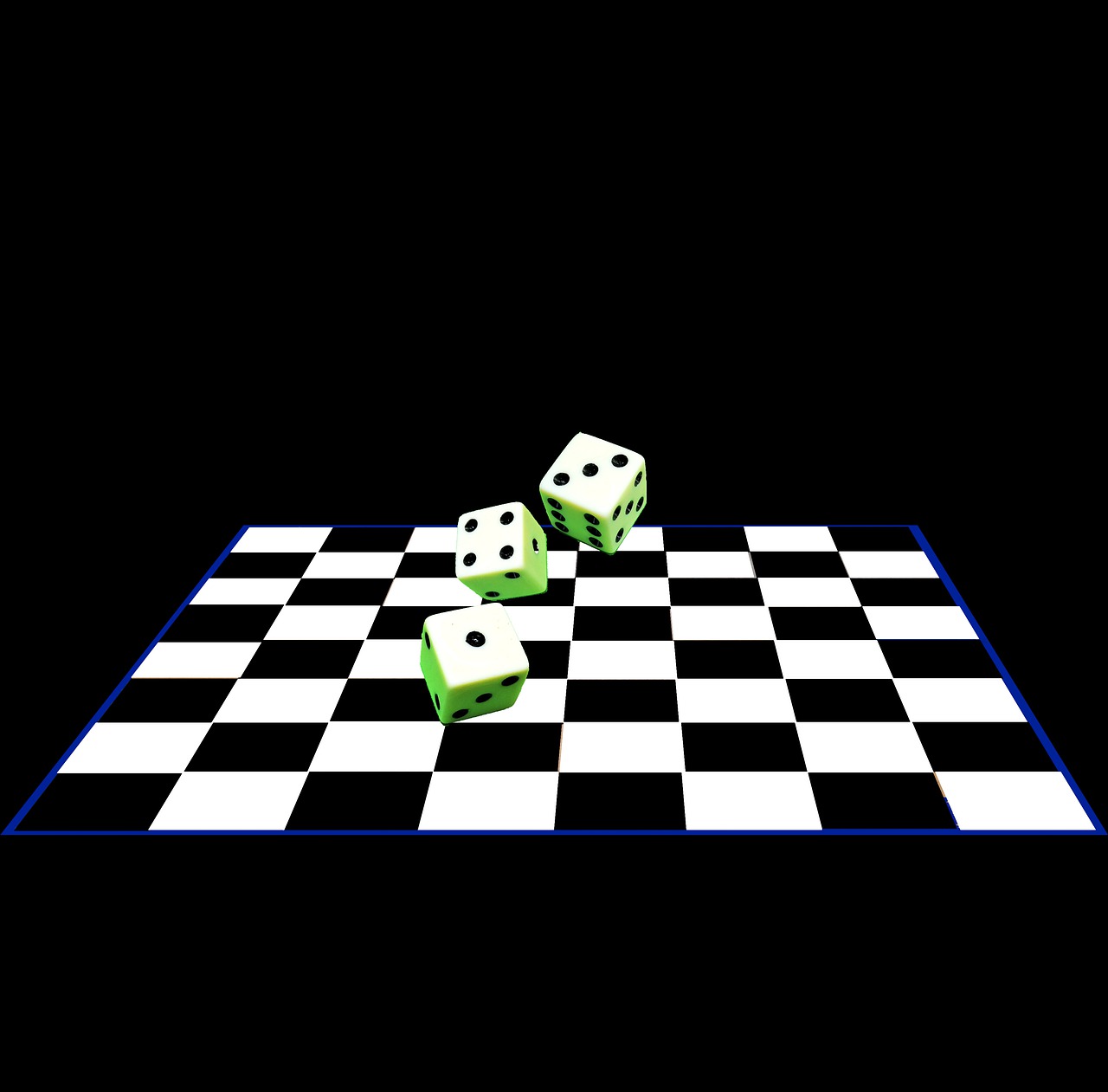
Some say that chess is based more on skills than luck. However, whenever a dice comes into the mix, it becomes more of a game of luck rather than skill.
There are different variations of Dice chess. This range makes it one of the most complex chess variants today.
Sometimes, one plays this variant using one die, while other times, players use two dice. On rolling the dice, one dot on either die represents the pawn, 2 represents the Bishop, 3 represents the Knight, 4 represents the Rook, 5 represents the Queen and lastly, 6 represents the King.
Only one piece can be moved per turn, even if the dice rolls two different numbers. If there are no legal moves after a roll of the dice, the player loses a turn.
If you love dice games like Ludo or Backgammon, and you also love chess, then you’ve just discovered a way to merge both interests. You can also use dice chess to lure your dice-loving friends to the world of chess!
Handicap Chess
Many chess players and overall enthusiasts don’t realize that this is an actual variant, even though its concept is not new to them.
If you’ve ever taken off one of your knights or bishops in a standard chess game, especially against a comparatively weaker opponent, you’re no longer playing standard chess but Handicap Chess.
Handicap is popularly called odds, and it is quite a popular chess variant.

Odds can be in various forms. One side could deliberately be assigned more time on the clock or one side could play with fewer pieces.
One side could even be offered more moves in a turn, or a side could be allowed to develop in the opening, while the handicapped player remains underdeveloped. You can play this variant on Lichess.org or chess.com.
Atomic Chess
The Atomic Chess variant is like the chess version of Minesweepers. As much as capturing pieces can be exciting, it’s a sacred art in this variant.
Capturing pieces causes surrounding pieces, except pawns, to detonate! Note that friendly pieces will not be spared from the explosion.
Because of this bomb threat, Kings are not allowed to capture pieces in Atomic Chess.
Asides from the explosions, Atomic chess is largely similar to standard chess. The game is typically won by exploding the opponent’s King without harming your King.
Atomic Chess can be played on Internet Chess Club, chess.com, and lichess.org. Other chess variants that involve explosions are Beirut Chess and Stratomic.
Knightmate Variant
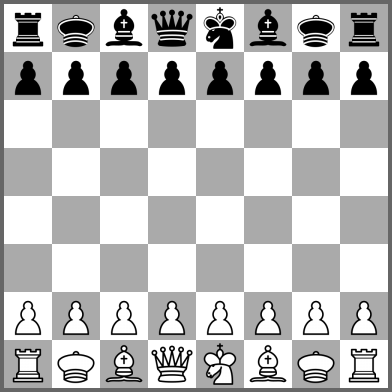
No, it doesn’t mean using the knight to mate, as in Philidor mate or smothered mate. In this case, the hunter becomes the hunted as the Knight is the piece to be mated!
This variant was presented to the world by Bruce Zimov in 1972. The rules are simple but not so simple. Think of the Knight as the King and the King as the Knight. This means that the Knight retains all its ability, but as the case may be, it now bears royalty.
It also means that the King comes in pairs for both sides while the Knight replaces the King in his starting position on the e- file. Mating the Knight is not as easy as it sounds because of its ability to jump over pieces.
The Knightmate can be set up on the physical board, but you cannot play it on top chess platforms like Chess24, Lichess, or chess.com.
Three-Check Chess
Everything about standard chess applies to the Three Check variant. To win this game, a player has to check his opponent’s king three times. As a result of this, the players do everything in their means to prevent their opponents from landing checks on the king.
Players make sacrifices that could be deemed pointless in standard chess to register a check and a step closer to a win. The chess variant is available for exploration on lichess.org and chess.com.
These are some other cool variants to try out if standard chess has become too regular. Do let us know if this article was helpful!
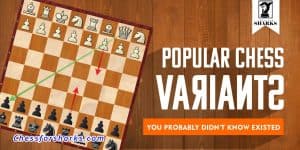



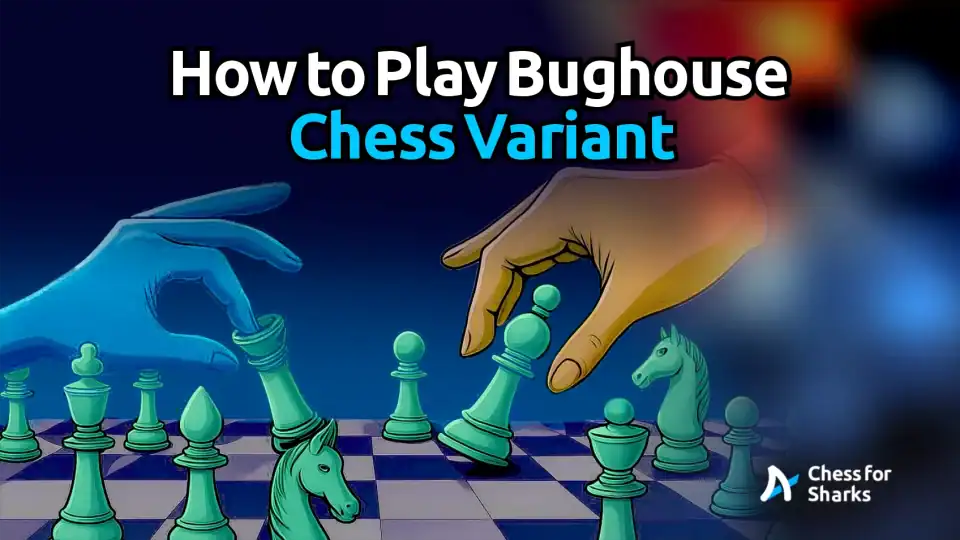
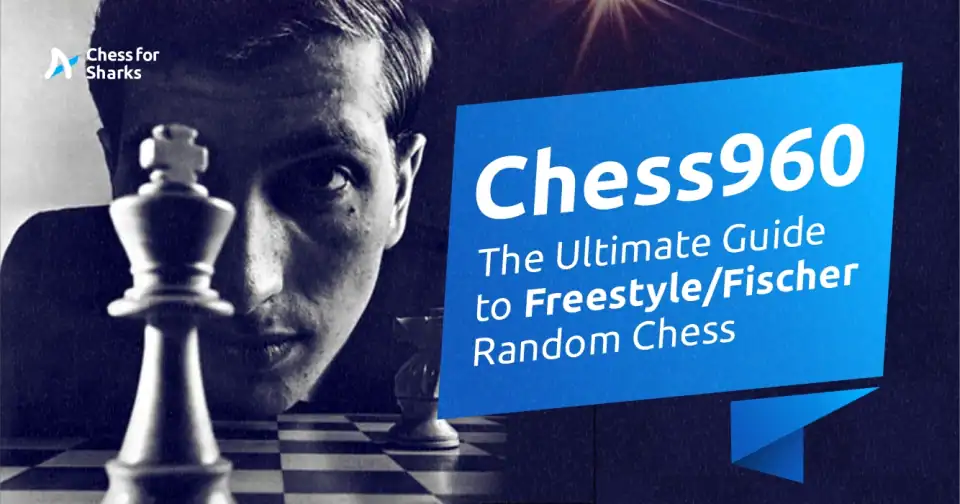
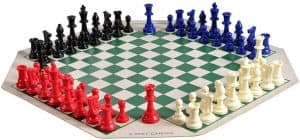
4 comments
Redmi10
While Antichess variant became very popular , but you even didn’t refer to
Chessforsharks Editorial Team
Hey, Thanks for commenting.
You’re right, Antichess is gaining popularity lately!
Stay tuned for future posts where we may cover it in more detail. #Checkmate you day! ♟
Nikhil Dixit
Amazing article!
Chessforsharks Editorial Team
Thank you!